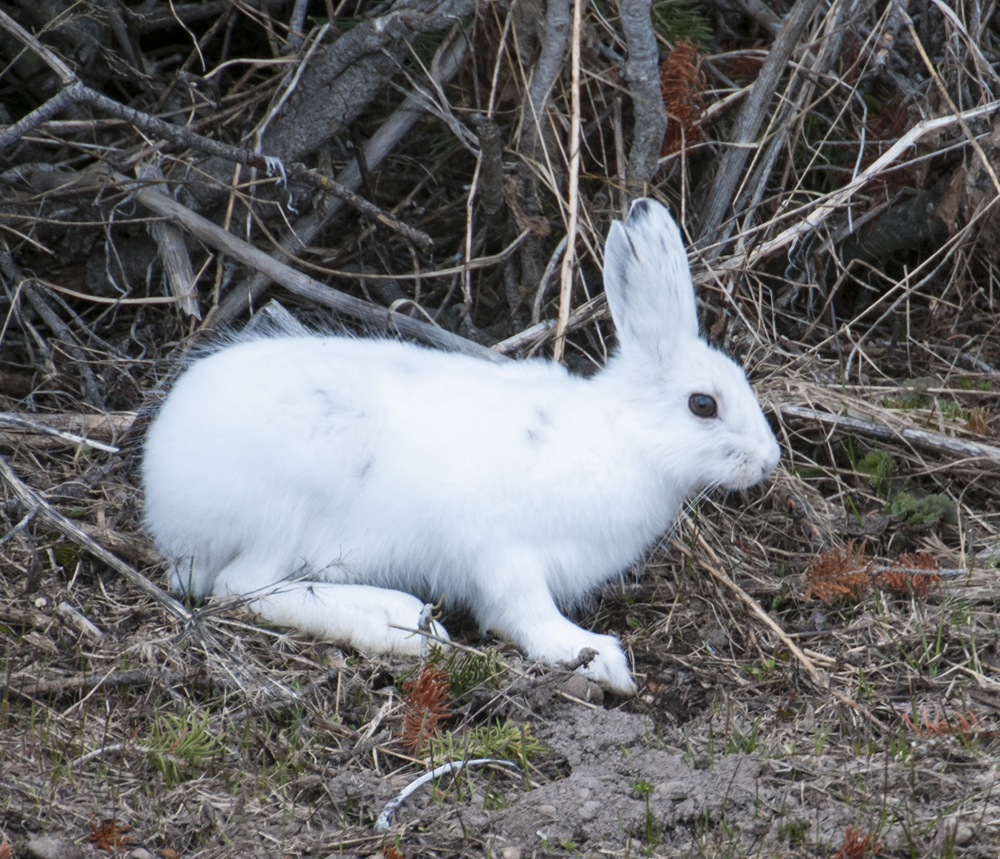
by Judy Lehmberg, BioPics Photography, www.vernelehmberg.com

We saw a snowshoe hare yesterday and it got me to thinking about how animals and plants change color. Snowshoe hares are white in the winter and tannish in the summer. That is obviously an advantage so predators don’t see them as easily. In fact, some studies on snowshoe hares have found that most snowshoe hare predation occurs in the fall and spring when they aren’t the “right” color. They change their colors in response to day length. As the days get shorter in the fall they begin to turn white and when the days get longer in the spring they become a tan to brown color. The problem is the day length doesn’t always correspond to the amount of snow on the ground, especially since climate change is occurring. A white hare on brown dirt is more likely to get eaten than a tan one.

The snowshoe hare also got me to thinking about how other organisms change color and what a large variation there is in how various species change color. Some are strictly dependent on genetics such as humans, wolves, and Labrador retriever dogs, but some, like snowshoe hares, are dependent on their environment. If you have ever grown hydrangea plants you know their flowers can range in color from blue to pink. But did you know you can control their color? If you want blue ones add a mild acid to the soil to get the pH down to around 4.5. If you want pink ones add something alkaline to the soil and get the pH up to 7.0. Want purple? Get the pH higher than 4.5 but lower than 7.
Another interesting example of color change in animals is the Siamese cat. Have you noticed that many Siamese cats have black feet, ears, tails, and the tips of their nose, but the body of the cat is much lighter. In Siamese cats color is controlled by temperature. The colder it is the darker they are. That is why the extremities of their bodies are darker because it is harder to kept them warm. I used to tell my students if they had a Siamese cat and wanted it to be dark then throw it in the freezer for a week or so. Of course that would also kill the cat, but I don’t like cats because they kill so many songbirds. I know the cat lovers out there are not amused, but I am.






As a cat lover, I have to agree- it’s a shame that PEOPLE let their cats run loose to predate on native animals (especially songbirds). My cats have always been “inside kitties” & very happily so.
Can’t believe that you saw a snowshoe hare. We were looking for one when we found the jack rabbit.
I have to agree with you, Judy. That’s why my kitty boy is an inside kitty with a nice padded view of the bird and,alas squirrel feeders. He is also much safer being inside.
Judy that was very interesting. My family and I saw a snowshoe hare when we were in Yellowstone early June it was still white and made it easier to spot. My son (thirteen) and I discussed the pH levels and it was quite an interesting discussion. He spoke about the human pH level and base levels. Very interesting. Thank you for another great article.
Thank you Barbara. It warms the cockles of this biology teacher’s heart to know the snowshoe hares started a conversation on pH with a thirteen year old. Good for him!
No, Judy, I am not amused! I did however, like most of your article. I have never seen a snowshoe hare, but maybe I will next year while in Yellowstone.
Sorry Kitty47! I didn’t say it in the article but the cats I don’t like are the ones their owners let outside. That is really the owners fault not the cat’s, but they still kill between 1.4 and 3.7 billion birds a year in the U.S. alone. Outdoor cats are the “biggest immediate danger that living around people brings to wildlife.” (ScienceNews, January, 2013)